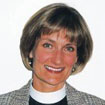We all know that money is not the only aspect of stewardship we need to focus on.
We also all know that money is perhaps the most difficult aspect of stewardship for most of us to talk about…and for this reason perhaps the most important.
By way of example: giving in the Evangelical Lutheran Church in America dropped from three percent of a household income a few years ago to just over one percent last year. This represents a crisis not primarily of income to the church — though it is that — but of a crisis in the spiritual lives of our people. I realized this most fully once I actually started preaching on stewardship. The feedback stunned me. Not, I think, because the sermons were so great, but because my people said they were getting “new information,” something they “had never heard before.”
I will never forget the middle-aged business man who said to me, “My credit cards are a part of my life that I carry with me every day, and yet I have never heard a pastor address my money as a part of my spiritual life.” When we do not preach on stewardship, we ignore a significant part of the lives of all of our people and miss an incredible opportunity to connect their faith to their employment, earnings, giving, and values.
So where does the good stewardship sermon come from? I have found that most of it comes way before I sit at my computer to write, and I want to share in this article some of what I have learned on my journey as a stewardship preacher.
Creating a Culture of Stewardship
Most of my stewardship preaching arises from the broader church culture of stewardship we have created in our congregation. “Culture” is bigger than one person, and one of the most important things I have realized is that stewardship cannot be something on which only the pastor has his or her focus. Like so much else in the church, stewardship needs to become a team effort. Here are some ways to move toward that goal:
- Write Guiding Principles. We pulled together a group of people who had been on our Stewardship Teams, led Capital Appeals, and served on our Foundation Board, and we wrote a list of “Guiding Principles” for stewardship. It forced us all to articulate what was most important to us in our understanding of biblical stewardship and what it was we really wanted to convey to our congregation. I refer to these often in my preaching and teaching.
- The New Member Class. These Principles also laid the groundwork for how I teach stewardship in our New Member class (I spend about 15% of that class on the topic of stewardship). 46% of our longtime members pledge, whereas 66% of those who have joined in the past few years are pledgers. Why the difference? We talk about it! Set the bar high. Convey an expectation. People actually appreciate the guidance in this area.
- Train Stewardship Mentors. We are still experimenting with this, but I hand-picked about 20 people to attend a few “mini-retreat sessions” that were led by a stewardship consultant. These folks signed on with the understanding that, when finished, they would choose a particular “stewardship task” in our congregation. For example, they would help integrate stewardship into our Sunday School and Confirmation curriculum, write articles for the newsletter, give their testimony in a New Member class or as part of a sermon. When it came time for our Capital Appeal, I pulled many of the Leadership Team from this group.
- Use Capital Appeals. The events we held for “lead givers” were great opportunities to take some of our most committed folks and nurture their continued growth. We not only talked about our facility project, but these small group times were a chance to lay out a biblical understanding of giving and have some discussion around that.
- Focus on Families. Nathan Dungan led a group of our families with 4th-8th grade students through a few of his training sessions on “Share-Save-Spend.” These families with teenagers were more than eager to get some assistance in teaching their kids values around money! Let these kids speak in worship and talk to the Sunday School classes. It will be powerful.
Stewardship is Year-Round
True, fall is “stewardship season,” but when we preach about it in the fall, it usually gets connected with our budget needs and people hear it that way. Wonderful stewardship texts come up all year long and by preaching on stewardship throughout the year we are teaching that stewardship is a part of our lives, not just something we do to fix our budget.
I have found that people are most receptive to hearing about money in January…when everyone is in post-holiday debt! When we taught the “Good $ense Budget Course” in January, we packed the room with people I had never seen before. There are many other opportunities to connect our faith and our money and by doing so, you help to make stewardship part of our everyday conversation.
Bottom line: Do not save your best stewardship sermon for the week before pledge Sunday. Talk about this aspect of the life of discipleship in January, March, May, and August as well.
Make it a Part of Your Life, Too
I began by saying that the pastor cannot carry the “stewardship load” alone. That is true. But the pastor is called to lead. Here are three things I have found helpful in finding and developing my own stewardship voice.
- Tell Your Stewardship Story. I have found that people appreciate hearing my struggles, how we came to decisions in our family about giving, saving, and purchasing, and how, like them, I needed to learn how to give. I have also found that it helps a lot to write out my stewardship story ahead of time. Writing helps me articulate what I believe, what I have learned, and what is most important to share. It also helps me find words for something many of us find challenging to talk about.
- What to Share. I do not tell my parishioners dollar amounts when it comes to what I give, but I do tell them my own percentage of giving. I use these figures both as a challenge and as a way to hold myself accountable. I realize that different pastors have different strategies about this. Some talk about dollars. Some talk about percentages. But the important thing is, in fact, to talk about it. Silence also communicates! Over the years I have developed the conviction that, as a pastor, I cannot preach about stewardship unless I am working at growing as a steward myself.
- Read. There are some great stewardship books out there. I have found Giving to God, by Mark Powell, and Passing the Plate, by Christian Smith, very helpful.
By developing a culture of stewardship, focusing on stewardship throughout the year, and growing in my understanding and practice of stewardship myself, I have found that when I sit down at the computer, much of the work is done. I cannot say the stewardship sermon exactly writes itself, but I can say that finding ways to name stewardship as an opportunity and blessing becomes not just easier, but actually enjoyable.

